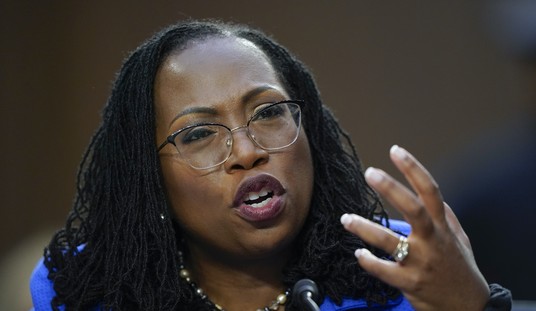The state of New York first passed a bail reform measure in 2019. It amended the law in 2020 when several criminals who had been allowed to walk after committing a violent crime ended up committing additional offenses.
The law was amended again in 2022 to close several loopholes that led to more innocent people being victimized. It turns out, if you give judges and prosecutors too much leeway in determining whether a perp should be allowed to walk the streets after committing a crime, bad things are likely to happen.
The Data Collaborative for Justice at the City University of New York’s John Jay College has been tracking the results of the "No Bail Law" since 2020, and their findings will surprise no one with half a brain.
While the study showed reduced recidivism in New York City —touted by advocates who believe it proves bail reform works — it failed to make a dent in recidivism rates in the rest of the state. Also, the reduced recidivism was "driven mostly by the reform’s impact on low-risk defendants—those with nonexistent or minimal criminal histories," writes Rafael A. Mangual in City Journal.
The study's key finding: "When it came to high-risk defendants, 'the reduced use of bail was consistently associated with worse outcomes,'" Mangual writes. "That includes higher rearrest rates both in general and for violent felonies in particular."
In other words: bail reform has released more high-risk defendants onto the street, where they have gone on to commit more crimes than they otherwise would have been able to if a judge had been permitted to consider their criminal histories.
The basic questions of bail reform do not concern whether low-risk defendants should be released; most would agree that they should. Rather, the questions are: Should New York join every other state in the union in allowing judges to consider the risk a defendant poses to public safety when weighing pretrial release? And has New York’s bail reform facilitated the commission of crimes that wouldn’t have otherwise been committed under a different pretrial release policy?
Each of the three studies of New York State’s bail reform published by the Data Collaborative for Justice has produced evidence suggesting that the answer to both questions is “yes.”
Mangual says, "The basic takeaway is that rearrest rose after bail reform. Using the constant window, the increase is on the order of 3 to 5 percentage points. But that window necessarily undercounts rearrests."
"In July 2020, the first set of amendments to bail reform expanded the number of bail-eligible offenses. At that point, rearrest rates settled around 20 percent to 21 percent — 3 to 4 percentage points higher than before bail reform," Mangual writes. That's an amazing statistic. Even after adding offenses that a judge could consider requiring cash bail, the rearrest rate rose 3-4% higher than before bail reform.
How many victims does that represent? How many people suffered trauma or worse because the state's ability to protect its citizens has been compromised by politicians listening to radical activists who don't believe anyone should be in jail, especially if they're black?
The Collaborative’s March 2023 study found, for example, that “the mandatory release provisions and, to a lesser extent, provisions leading to the reduced use of bail in cases still eligible for it . . . increased recidivism for people with substantial recent criminal histories.”
The authors of its October 2023 study wrote that “when the analysis was narrowed to ‘high-risk’ individuals with a pending criminal case, we found an increase approaching statistical significance in violent felony recidivism within two years, and a statistically significant increase in pretrial violent felony recidivism.”
The findings of this most recent analysis point in the same direction, and they leave us with another question: Will the politicians in Albany considering changes to bail policy be guided by evidence—or ideology?
That's a silly question. The entire effort to "reform" criminal justice is an ideological nightmare brought to us by far-left activists who think that because there are far more black people in prison than white people, the justice system is hopelessly racist.
Bail reform isn't going to fix that, even if it were something that could be fixed. All it does is allow people who shouldn't be on city streets to roam free to prey upon those who are weak and helpless.
PJ Media has been a source of independent news for more than 20 years. Unafraid to take on the critical issues that the national media won't cover, our team of writers and editors works tirelessly to bring stories that inform and make readers think about America and its place in the world.
Help us continue to report the news you care about. Use promo code FIGHT to get 60% off your VIP membership.










Join the conversation as a VIP Member